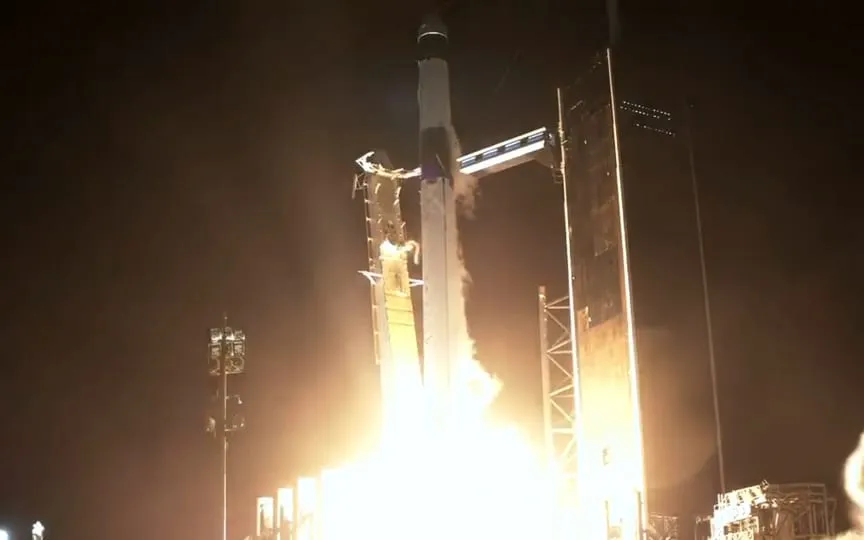Dragon Spacecraft Successfully Connects to International Space Station
Yesterday, SpaceX’s Crew Dragon spacecraft triumphantly achieved docking with the International Space Station, marking the commencement of a six-month mission for its crew of four astronauts.
The docking occurred at about 9:16 a.m. EST as both spacecraft circled above Australia, SpaceX officials said in a live broadcast.
Dubbed Crew-7, this trip will be SpaceX’s seventh operational human spaceflight to the space station under NASA’s Commercial Crew Program. This is also the eleventh time that SpaceX has sent humans into orbit.
It comes under the name Boeing Co. — NASA’s other commercial crew supplier — is working to get its long-delayed Starliner spacecraft ready to fly next year. The delays have raised concerns about NASA’s goal of getting multiple lifelines to the ISS.
Led by NASA astronaut and commander Jasmin Moghbel, Saturday’s crew includes Danish astronaut Andreas Mogensen of the European Space Agency, Satoshi Furukawa of the Japan Aerospace Exploration Agency and Russian cosmonaut Konstantin Borisov. The crew is scheduled to remain on board before returning in early 2024.
The four astronauts of SpaceX’s Crew-6 mission, who have lived on the ISS since March, will spend the next week welcoming the Crew-7 astronauts before returning to Earth in their own Crew Dragon capsule, tentatively scheduled for September 1.
NASA and SpaceX had originally hoped to launch on Friday, but decided to abort the liftoff hours before to allow more time to analyze the Dragon’s life support system.
Crew-7 was launched after SpaceX revealed problems with sticky valves on a previous Dragon flight — a problem that could have been a problem for Saturday’s flight. During a cargo addition mission to the space station in June, SpaceX noticed that a particular valve on the Dragon cargo capsule was stuck open throughout the flight. The valve is meant to stay open and only needs to close if there is a propellant leak, so it didn’t cause any major problems. But if the leak had happened, SpaceX would have had a much bigger problem.
After that mission ended and the Dragon capsule returned to Earth, SpaceX looked at the problematic valve and found evidence of corrosion after sending parts of it for testing. This prompted the company to look at valves across the Dragon fleet.
“We wanted to understand it very thoroughly, so we spent the last month or so looking at the data, and SpaceX was testing different valves all over the country,” said Steve Stich, director of NASA’s Commercial Crew Program. press conference before the flight.
Finally, the company pinpointed the source of the problem. Some of the propellant used by the Dragon spacecraft can mix with too much moisture in the air, creating an acid that corrodes the valve.
SpaceX said further testing revealed a fix to the poppet valves. “We figured that if we power the valve a little bit longer, we can drive through this corrosion and get the valve back to work,” Bill Gerstenmaier, SpaceX’s vice president of construction and flight reliability, said. press conference. The company also uses dry nitrogen air to remove excess moisture from the system, a solution Boeing used for the Starliner.
SpaceX also decided to replace some of the valves on several Dragon spacecraft, including some of the valves on Crew-7’s Dragon.
However, SpaceX and NASA are still thinking about ways to fix the corrosion in the long term, as the goal is to fly Crew Dragon vehicles into space at least five times.




